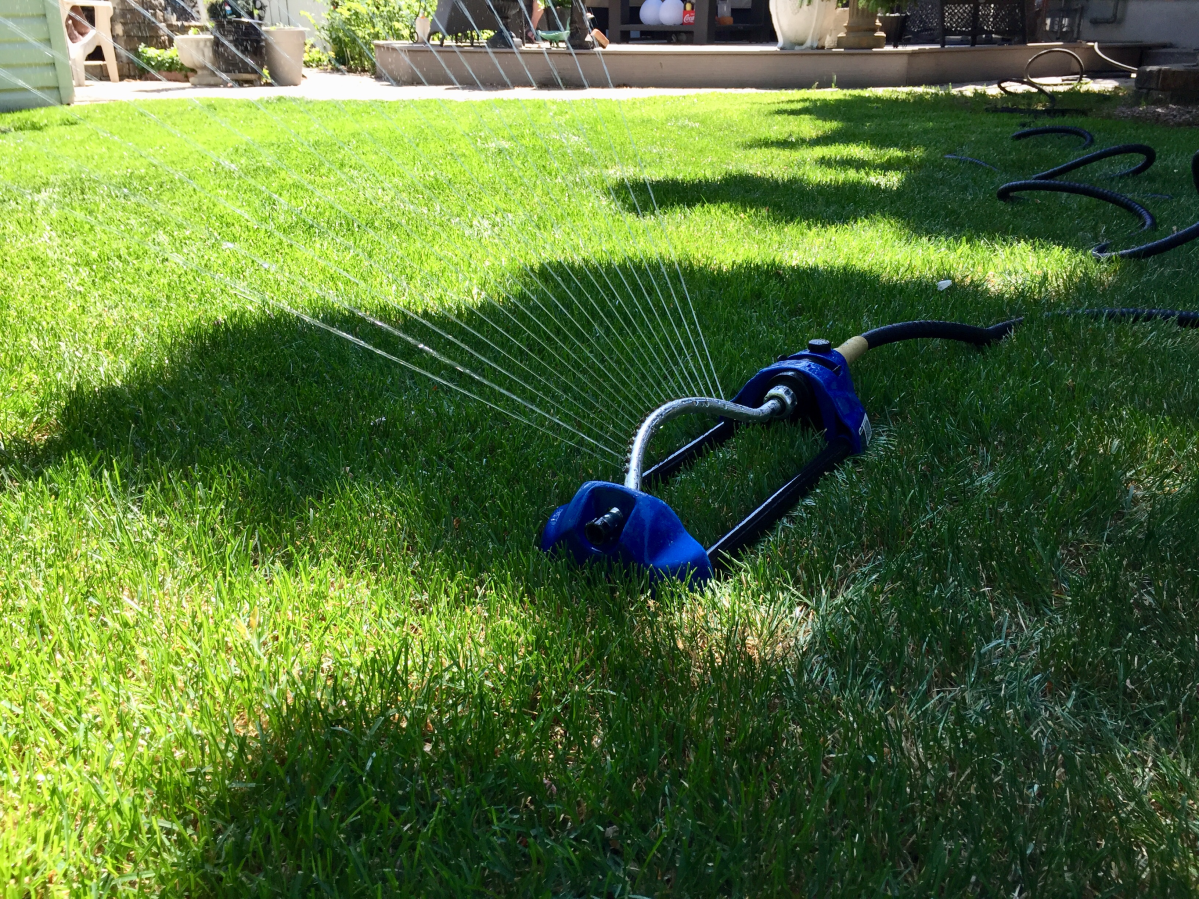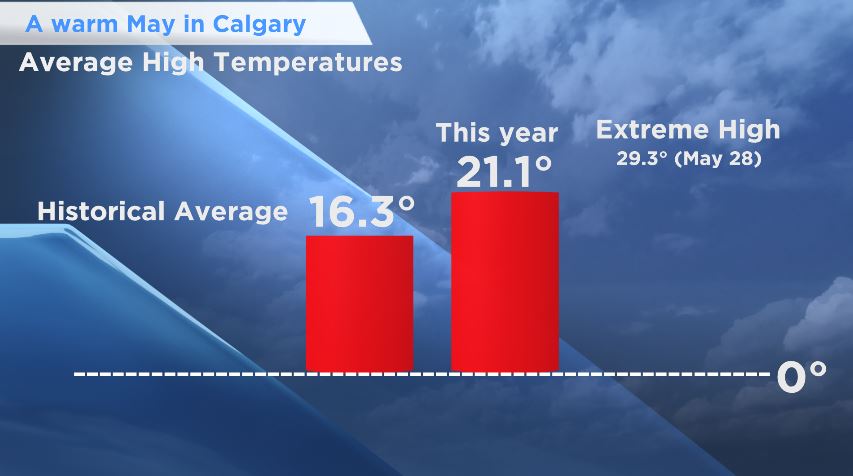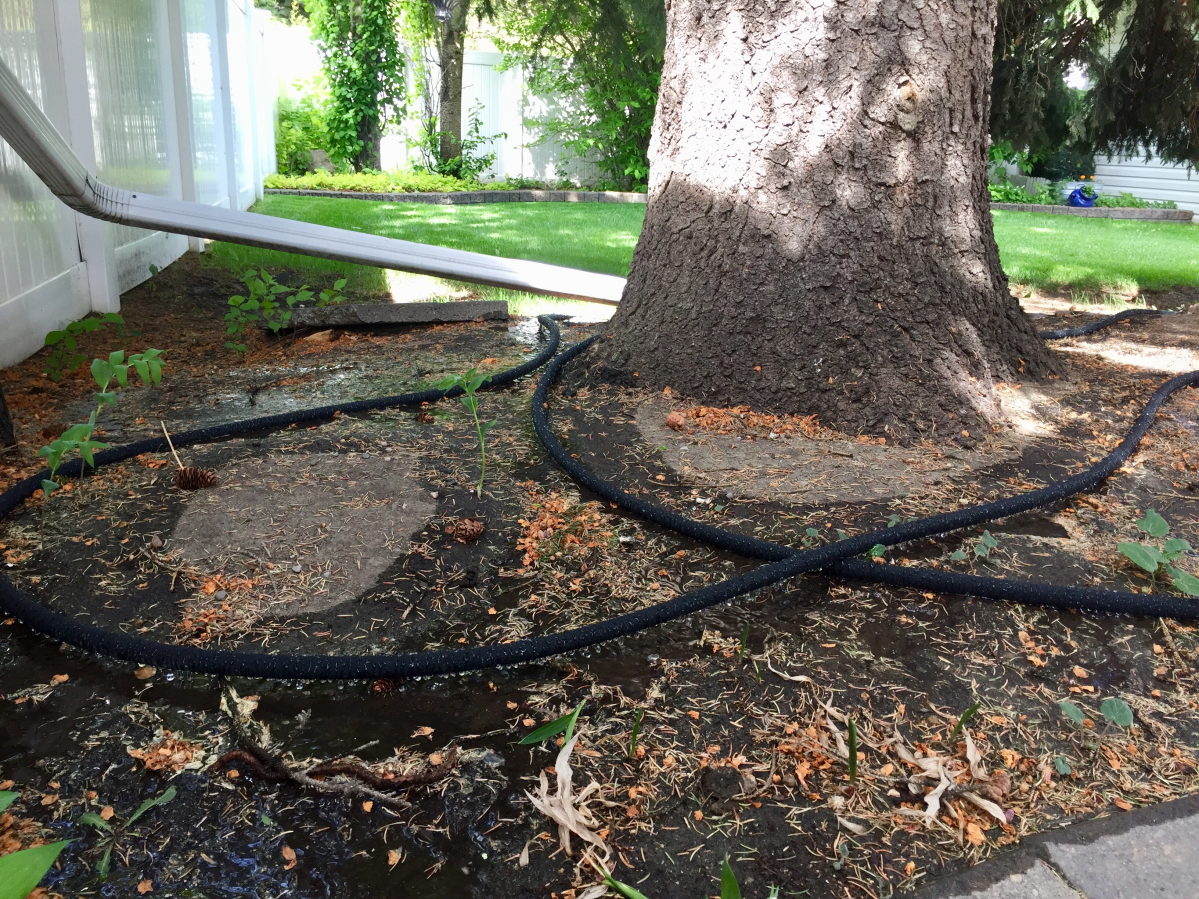Although summer doesn’t officially begin until June 21, Calgary had summer-like temperatures and conditions for almost the entire month of May, and we are off to a good start for June as the growing season officially is underway.

The average daytime high in May was above average in Calgary and we had ten days when the temperature was above 25 C.
Most of us have already planted our annuals and raked, fertilized and cut the lawn at least once, and are now ready to enjoy the fruits of our labours. So now the question is, how much do we need to water so everything remains healthy and grows to its full potential?
How much water should you give your lawn?
With lawns, the general rule has always been to water about 25 to 40 mm (one to one-and-a-half inches) a week.
The best time to water is early morning or at night in order to minimize moisture loss through evaporation. Water evaporates directly off the soil, leaves and stems of plants on sunny and hot days, and all plants, including grass, allow even more evaporation through a process known as transpiration. Moisture below the surface is drawn up through the plant’s roots and evaporates through pores in their leaves, stems and flowers.
Another drawback to daytime watering is that water droplets can magnify the sun’s rays and burn your grass. Far better to water when the sun is down.
WATCH: Gardening Tips: tomatoes and flowering plants

It isn’t necessary to water on days when it rains a significant amount. Checking the rainfall totals on the Environment Canada website will tell you how much rain was recorded at Calgary International airport, but that may not be indicative of how much fell at your house.
You can monitor how much rain has fallen, or how much you have watered, with an inexpensive rain gauge that can be purchased at a garden centre or hardware store. You might also find one in the gadgets section of your favourite grocery store.
No rain gauge? No problem. Place an open, flat-bottomed dish on the ground and then measure the depth of the water it collects. If you measure the recommended amount, you’re good to go.
It is also recommended that you don’t put down a week’s worth of water all in one day, but spread it out over two or three days during the week.
Fertilizer is also key to keeping your lawn lush and green, as well as cutting it to the proper length. Cutting it too short may cause your grass to dry out or even burn.

Perennials and annuals
Perennial and annual plants, especially those in containers, usually require daily watering. Check the soil at a depth of five to eight cm (two to three inches), and if it is dry at that level, the plant needs water. If a plant seems to be wilting and dying, it may be because it is getting too much water.
In addition to water, your plants and grass require fertilizer. Talking to an expert or researching it online will help you find the proper fertilizer, along with information about how much to give your plants.
Trees
Trees also need watering of course but are often overlooked. The effects of drought aren’t immediately apparent in trees, so don’t wait until they show signs of stress before doing something about it.
Young trees need more frequent watering and care for the first two years. After that, you should try to water your trees about twice a month, but water more frequently during very hot and dry weather. Most fibrous absorbing tree roots are found in the top five to 20 cm (two to eight inches) of soil, and watering slowly with a soaker hose seems to be the best option for most people.
Lay the hose on the ground about a meter away from the tree’s trunk, moving it outward to the drip line and water for about an hour or more so that the water penetrates to a depth of at least 15 cm (six inches). There are several types of soaker hoses and the staff at a garden centre will be able to help you decide which will be best for your applications.
Deep root feeding
You might also want to try deep root feeding your trees. This process involves using a tube that attaches to your garden hose and delivers water and fertilizer deeper into the soil. It is, however, easy to water too deeply, so that the water and fertilizer are not taken up by the tree. Do some research before attempting this method of watering your trees.
WATCH: Gardening Tips: getting gardens started

Whatever method you use to water your trees, it is important to check the soil moisture level to make sure you are neither under or over-watering. Drive a long screwdriver into the ground between the tree’s trunk and the edge of its canopy and if you can easily push it down to 15 cm, you’ve probably watered enough. Stop watering when runoff begins. This means the soil is saturated and cannot absorb any more water. And if the soil is too saturated, the tree is unable to absorb oxygen through its roots.
One sign of a waterlogged tree is mushrooms around the tree’s root zone. The soil may also smell moldy or sour. If you think you may have over-watered, stop watering and take steps to repair any damage.
Should you weed your garden and lawn completely?
Some gardeners believe there are reasons to allow at least some weeds to remain in your garden and lawn. A little time spent researching the topic online should help you decide if your garden contains weeds that you might want to leave alone and others that you should get rid of. This could help cut down on the time you spend weeding and make your efforts more effective.
Summer is short in Calgary, so make the most of it and happy gardening.
Want your weather on the go? Download Global News’ Skytracker weather app for IOS and Android.






Comments